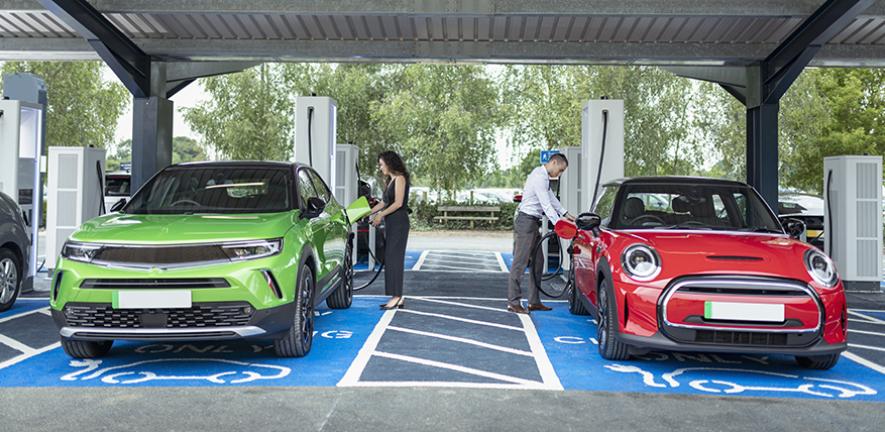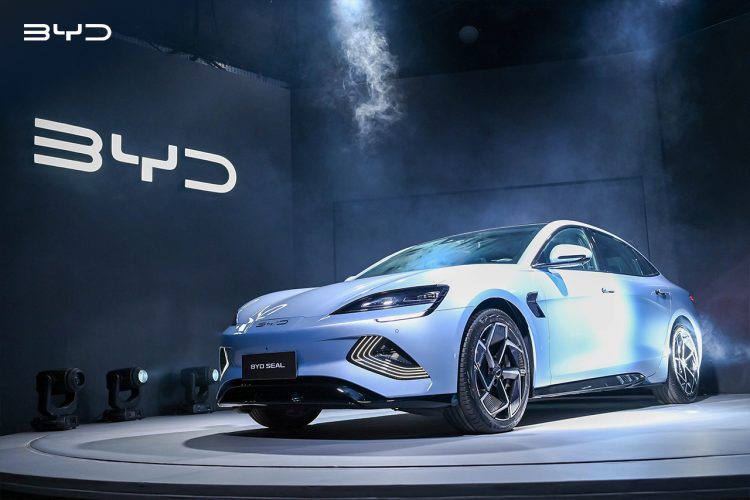Introduction: The Importance of Battery Technology in Electric Vehicles
Electric vehicles (EVs) have come a long way in terms of performance, accessibility, and consumer adoption. The key factor driving these advancements is the continuous improvement in battery technology. As the demand for electric vehicles grows, innovations in battery chemistry, design, and efficiency are revolutionizing the EV landscape. One of the most exciting developments is the emergence of solid-state batteries, which promise to enhance the performance, range, and safety of electric vehicles. In this article, we will explore the latest breakthroughs in battery technology, with a particular focus on solid-state batteries, and discuss their potential to improve the performance of electric vehicles in the years to come.
The Evolution of Electric Vehicle Batteries
Before diving into the latest innovations, it’s essential to understand the evolution of battery technology in electric vehicles. For the past few decades, lithium-ion (Li-ion) batteries have been the dominant energy storage solution for EVs. These batteries are known for their high energy density, relatively low cost, and long cycle life. However, despite their advantages, lithium-ion batteries still face several challenges, including limited energy density, slow charging times, and concerns over safety.
As the electric vehicle market has expanded, the pressure to develop more efficient, longer-lasting, and faster-charging batteries has intensified. Several promising technologies are emerging that aim to address the limitations of traditional lithium-ion batteries and unlock new possibilities for EV performance.
The Promise of Solid-State Batteries
One of the most promising innovations in battery technology is the development of solid-state batteries (SSBs). Unlike conventional lithium-ion batteries, which use a liquid electrolyte to conduct ions between the anode and cathode, solid-state batteries use a solid electrolyte. This shift in design offers several advantages that could revolutionize electric vehicle performance.
1. Higher Energy Density
One of the primary advantages of solid-state batteries is their potential to deliver higher energy density. Energy density refers to the amount of energy a battery can store relative to its weight or volume. Higher energy density means that electric vehicles can travel further on a single charge, which directly impacts the range of the vehicle.
Solid-state batteries can achieve energy densities that are up to 50% higher than traditional lithium-ion batteries. This improvement could enable electric vehicles to travel significantly longer distances, reducing range anxiety—a key barrier to widespread EV adoption. For instance, an EV equipped with solid-state batteries could potentially achieve ranges of 500 miles or more on a single charge, making long-distance travel in electric vehicles more feasible.
2. Faster Charging Times
In addition to offering higher energy density, solid-state batteries have the potential to reduce charging times significantly. One of the biggest challenges with current lithium-ion batteries is that they take a long time to charge, especially when charging infrastructure is limited. Solid-state batteries, on the other hand, are capable of faster charging due to their unique design.
The solid electrolyte used in these batteries allows for quicker ion movement, which means that the charging process can be completed in a fraction of the time it takes with traditional lithium-ion batteries. If solid-state batteries become commercially viable, EV owners could see charging times reduced to just minutes, much like refueling a traditional gas-powered vehicle. This development would alleviate concerns about long charging times and make electric vehicles even more convenient for consumers.
3. Improved Safety and Durability
Safety is another area where solid-state batteries outperform conventional lithium-ion batteries. Lithium-ion batteries have been known to pose fire and explosion risks, particularly when they are damaged or overheated. These risks arise from the flammable liquid electrolytes used in lithium-ion batteries.
Solid-state batteries eliminate the flammable liquid electrolyte, replacing it with a non-flammable solid material. This design makes solid-state batteries much safer and less prone to thermal runaway, which is a major safety concern with traditional lithium-ion batteries. Furthermore, solid-state batteries are expected to have a longer lifespan, as they are less susceptible to degradation over time. This means that electric vehicles equipped with solid-state batteries could have a longer effective lifespan, reducing the need for battery replacements and improving the overall cost-effectiveness of EV ownership.
4. Environmental Impact
Another significant advantage of solid-state batteries is their potential to reduce the environmental impact associated with battery production and disposal. Lithium-ion batteries require the mining of rare earth metals such as cobalt and nickel, which have environmental and ethical concerns related to their extraction. Solid-state batteries, on the other hand, can be made using more abundant and less environmentally damaging materials, such as solid electrolytes made from ceramics or glass.
By reducing the reliance on scarce and controversial materials, solid-state batteries could help make the production of electric vehicles more sustainable. Additionally, their longer lifespan and higher energy efficiency mean that fewer resources would be required over time to power electric vehicles, further decreasing their environmental footprint.

Other Innovations in Battery Technology
While solid-state batteries are garnering the most attention, there are several other innovative battery technologies that have the potential to improve electric vehicle performance. These include:
1. Lithium-Sulfur Batteries
Lithium-sulfur (Li-S) batteries are another promising alternative to lithium-ion batteries. These batteries use sulfur as the cathode material, which has a much higher theoretical energy density than the materials used in traditional lithium-ion batteries. Lithium-sulfur batteries also have the potential to be lighter and cheaper to manufacture.
Although lithium-sulfur batteries currently suffer from lower cycle life and stability compared to lithium-ion batteries, ongoing research is working to overcome these challenges. If these issues can be addressed, lithium-sulfur batteries could offer significant improvements in the range and affordability of electric vehicles.
2. Sodium-Ion Batteries
Sodium-ion (Na-ion) batteries are an emerging alternative to lithium-ion batteries that use sodium ions instead of lithium ions to store energy. Sodium is more abundant and less expensive than lithium, making sodium-ion batteries a potentially cheaper option for electric vehicles.
While sodium-ion batteries currently have lower energy density than lithium-ion batteries, they are undergoing rapid development, and advancements in materials science could improve their performance. Sodium-ion batteries could provide a more cost-effective solution for electric vehicles, particularly in regions where lithium is scarce or expensive.
3. Graphene-Based Batteries
Graphene-based batteries are another cutting-edge technology that could revolutionize electric vehicles. Graphene, a form of carbon that is just one atom thick, is an excellent conductor of electricity and has a much higher energy density than conventional materials used in batteries.
Graphene-based batteries have the potential to offer faster charging times, higher energy densities, and longer lifespans than lithium-ion batteries. Additionally, they are expected to be more environmentally friendly, as graphene can be produced from abundant materials. While still in the experimental phase, graphene-based batteries could be a game-changer for the electric vehicle market.
The Road Ahead: Commercialization and Challenges
While the potential of these battery innovations is clear, there are still several hurdles to overcome before they become widely available in electric vehicles. The development of solid-state batteries, for example, is still in its early stages, and many challenges remain in terms of scalability, cost, and manufacturing techniques. Additionally, the production of solid-state batteries at scale requires significant investment in new infrastructure and materials.
Furthermore, the commercialization of these advanced batteries will depend on ongoing research and collaboration between automakers, battery manufacturers, and governments. Incentives and funding will be crucial to accelerate the development and deployment of these next-generation battery technologies.
Conclusion: Transforming the EV Landscape with Battery Innovation
Battery technology is at the heart of the electric vehicle revolution. Innovations such as solid-state batteries, lithium-sulfur batteries, and graphene-based batteries have the potential to significantly improve the performance, safety, and sustainability of electric vehicles. These breakthroughs promise longer driving ranges, faster charging times, and lower costs, all of which are critical to making electric vehicles more accessible and appealing to consumers worldwide.
While there are still challenges to overcome, the rapid pace of research and development in battery technology suggests that the future of electric vehicles is brighter than ever. As these technologies mature and become more widely available, electric vehicles will become an increasingly viable and attractive option for consumers, contributing to a cleaner, more sustainable transportation future.











































